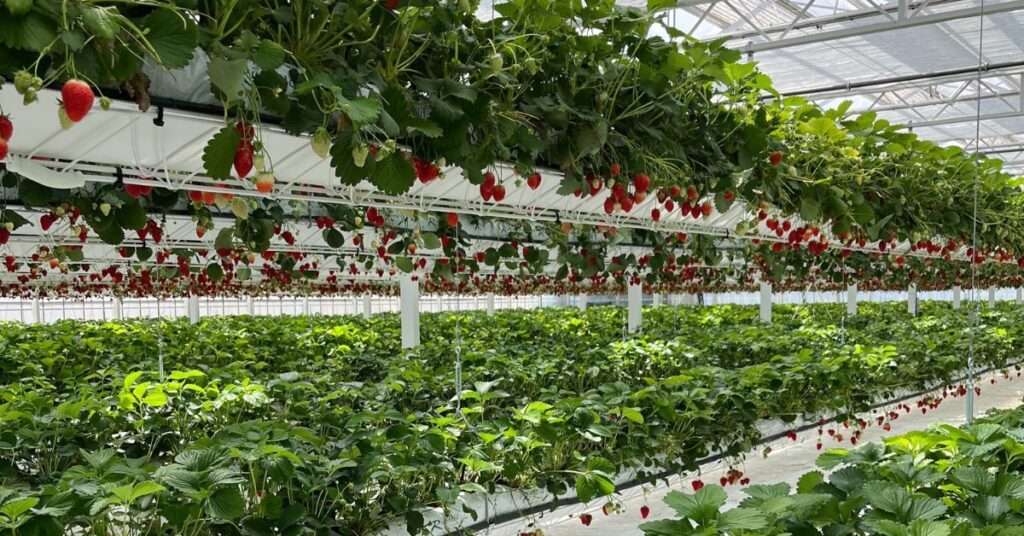Rajasthan, a state known for its arid climate and traditional farming practices, is embracing modern agricultural techniques. Hydroponic farming, a method of growing plants without soil, is gaining popularity due to its potential to overcome the challenges posed by the region’s harsh conditions. One crop that is particularly well-suited for hydroponic cultivation in Rajasthan is strawberries.
Why Hydroponic Strawberries in Rajasthan?
- Climate Control: Hydroponic systems allow farmers to create a controlled environment, mitigating the effects of Rajasthan’s extreme temperatures and unpredictable rainfall.
- Water Conservation: Hydroponics uses significantly less water than traditional soil-based agriculture, making it a sustainable option in a region with limited water resources.
- Year-Round Production: By controlling the growing environment, farmers can produce strawberries year-round, expanding their market opportunities.
- Higher Yields: Hydroponic systems often result in higher yields and faster growth rates compared to traditional methods.
- Improved Quality: Strawberries grown hydroponically tend to be sweeter, juicier, and have a longer shelf life.
Setting Up a Hydroponic Strawberry System
- Choose a System: Several hydroponic systems can be used for strawberry cultivation, including:
- Nutrient Film Technique (NFT): A popular choice for strawberries, involving a shallow channel where a nutrient solution flows continuously.
- Deep Water Culture (DWC): Plants are suspended in a nutrient-rich solution.
- Aeroponics: Plants are grown in a mist of nutrient solution.
- Prepare the Growing Medium: While hydroponic systems don’t require soil, a growing medium is often used to support the plants. Common options include coco coir, rockwool, and perlite.
- Set Up the Nutrient Solution: The nutrient solution is essential for providing plants with the necessary nutrients.
- Choose Strawberry Varieties: Select strawberry varieties that are suitable for hydroponic cultivation and thrive in warm climates.
- Planting and Care: Plant the strawberry runners into the growing medium and ensure they receive adequate light, temperature, and humidity.


Challenges and Solutions
- Temperature Control: Rajasthan’s extreme temperatures can affect strawberry growth. Use fans, cooling systems, or shade netting to maintain optimal temperatures.
- Humidity Management: High humidity can lead to disease and mold. Use dehumidifiers or improve ventilation to maintain appropriate humidity levels.
- Nutrient Management: Monitor the nutrient solution regularly and adjust as needed to prevent deficiencies or excesses.
- Pests and Diseases: Implement pest and disease control measures, such as biological control agents or physical barriers.
Conclusion
Hydroponic strawberry cultivation offers a promising opportunity for Rajasthan farmers to diversify their crops, increase yields, and improve quality. By addressing the specific challenges posed by the region’s climate and utilizing advanced growing techniques, farmers can successfully cultivate strawberries year-round and tap into lucrative markets.
